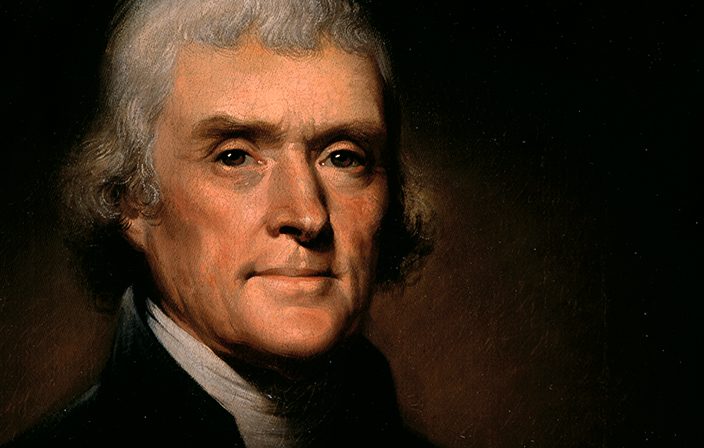How did we lose a president’s daughter?Posted in Articles, Biography, History, Media Archive, Passing, Slavery, United States, Virginia, Women on 2018-01-29 00:05Z by Steven |
How did we lose a president’s daughter?
The Washington Post
2018-01-25
Catherine Kerrison, Associate Professor of History
Villanova University, Villanova, Pennsylvania
 Thomas Jefferson is shown in a painting by Rembrandt Peale. Jefferson was the father of several children born to Sally Hemings, an enslaved woman at Monticello, one of whom chose to pass as white rather than claim her relation to the president. (AP/New York Historical Society) |
What the disappearance of Thomas Jefferson’s daughter can tell us about racism in America.
Many people know that Thomas Jefferson had a long-standing relationship with his slave, Sally Hemings. But fewer know that they had four children, three boys and a girl, who survived to adulthood. Born into slavery, Sally’s daughter Harriet boarded a stagecoach to freedom at age 21, bound for Washington, D.C. Her father had given her $50 for her travel expenses. She would never see her mother or younger brothers again.
With her departure from Monticello in 1822, Harriet disappeared from the historical record, not to be heard of again for more than 50 years, when her brother told her story. Seven-eighths white, Harriet had “thought it to her interest to go to Washington as a white woman,” he said. She married a “white man in good standing” in that city and “raised a family of children.” In the half-century during which she passed as white, her brother was “not aware that her identity as Harriet Hemings of Monticello has ever been discovered.”
So how did we lose a president’s daughter? Given America’s obsession with the Founding Fathers, with the children of the Revolution and their descendants, why did Jefferson’s child disappear? As it turns out, America has an even greater obsession with race, so that not even Harriet Hemings’s lineage as a president’s daughter was sufficient to convey the benefits of freedom. Instead, her birth into slavery marked her as black and drove her decision to erase her family history…
Catherine Kerrison is an associate professor of history at Villanova University, and the author of the forthcoming book “Jefferson’s Daughters: Three Sisters, White and Black in a Young America.”
Read the entire article here.







